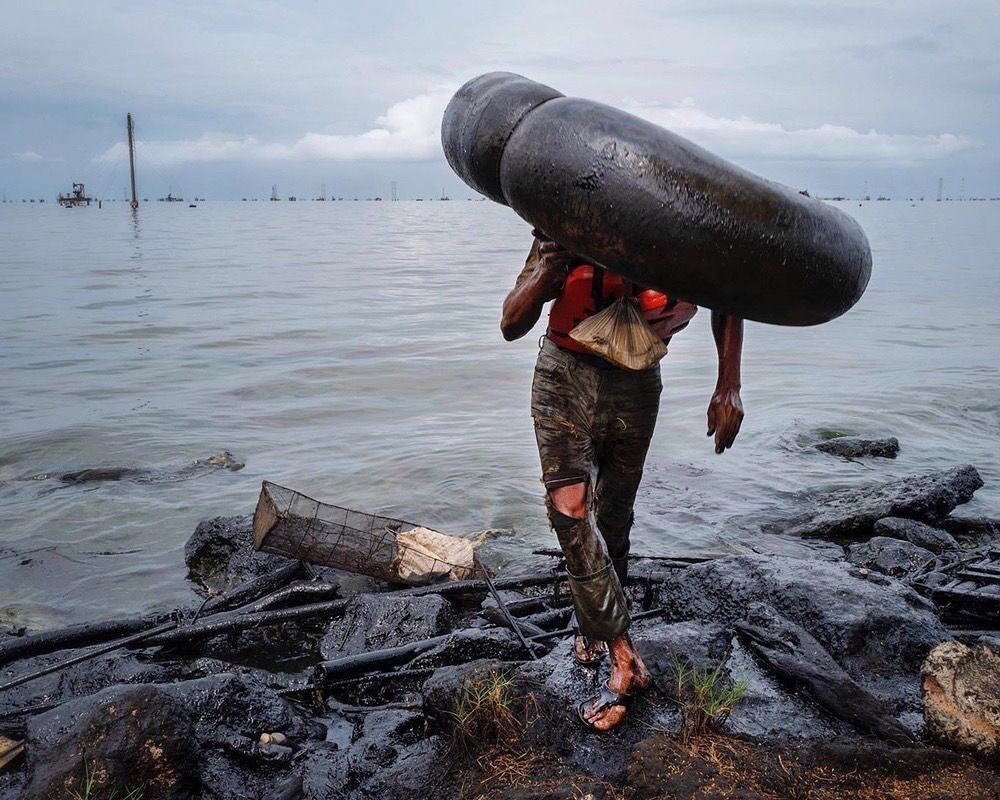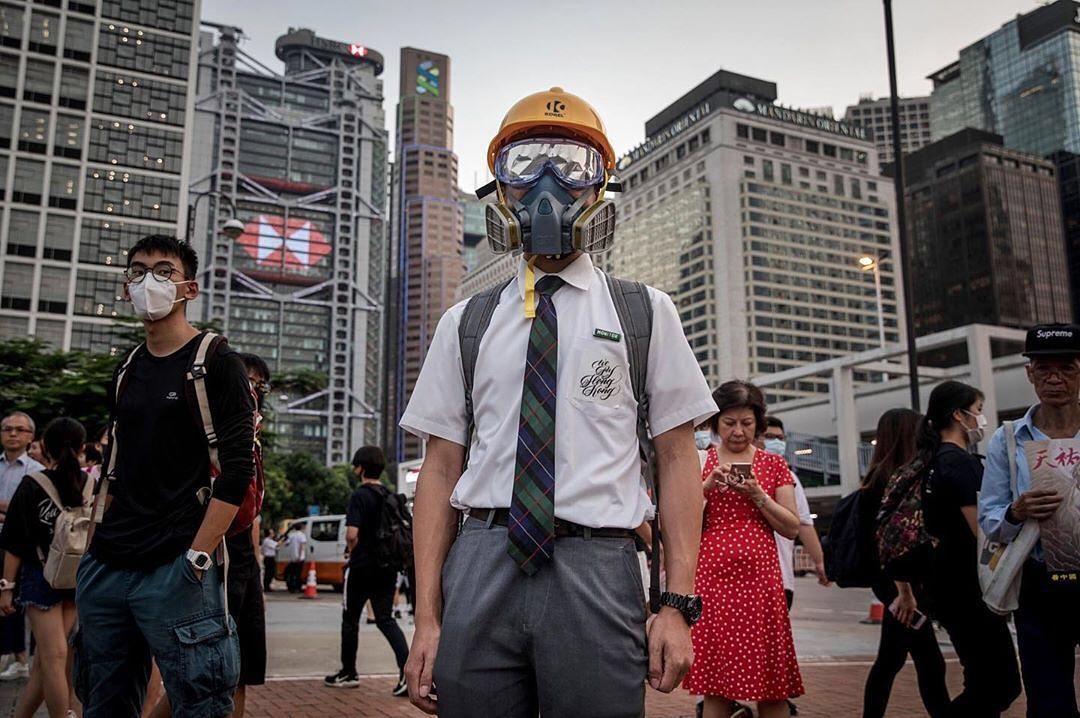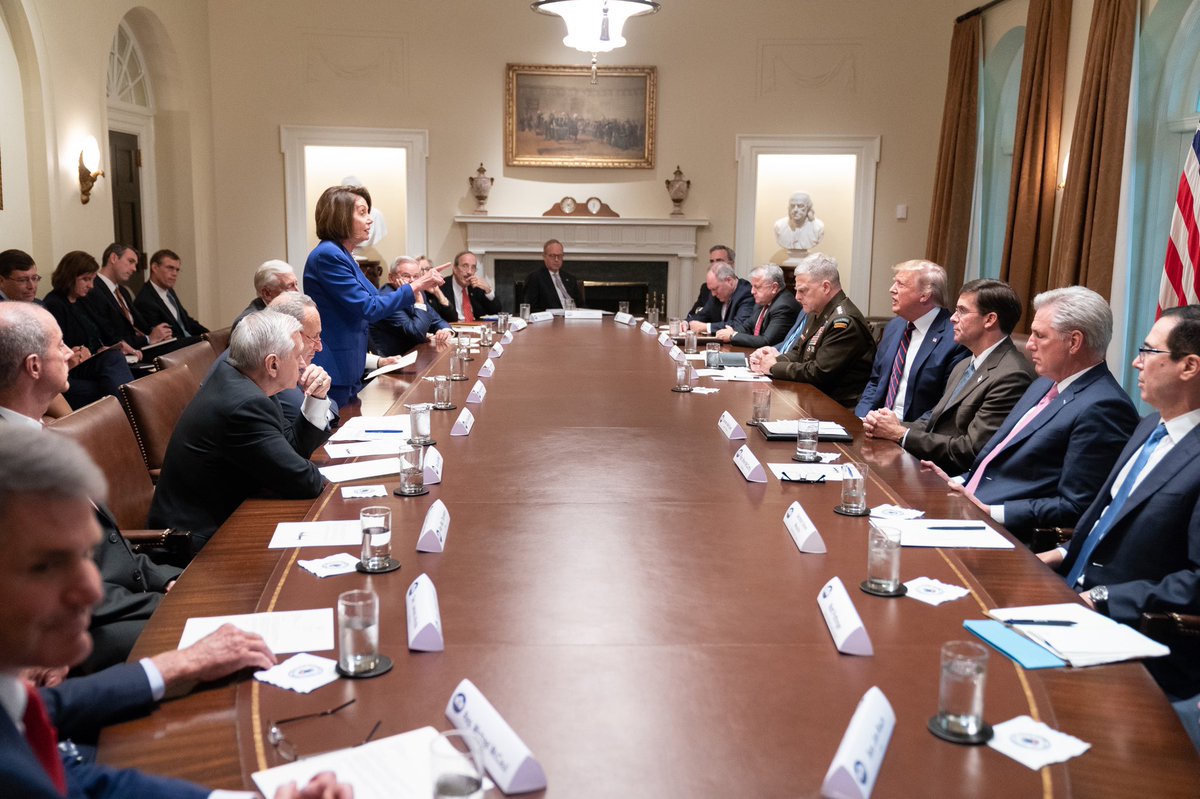Notes
Creature from the Fossil Fuel Lagoon

This week, the picture editor at The Guardian, Fiona Shields, wrote an important article for the editorial world. A rallying cry for more impactful images, she describes how her publication has been rethinking its visual approach to the climate emergency.
Along those lines, have you heard of “Creature from the Black Lagoon?”
Of course, the image above captures a worker carrying some kind of float involved with oil production. Here’s the caption that accompanies the Instagram photo by Washington Post photographer Michael Robinson Chavez:
“For much of this year, I’ve been traveling to Venezuela to cover the country’s unraveling. In particular, we look at the decay of Maracaibo, Venezuela’s oil capital, and Bolivar, once an ecological gem being laid waste by wildcat mining. Washington Post Outlook has dedicated a special section to the coverage.
Still, the oily man-without-a-head has other implications. As much as Maracaibo is decaying and Bolivar is being wasted, the photo is also a metaphor for the planet. As I was scrolling through Instagram, the picture first looked to me like a creature, a creepy mutation.
But isn’t that the point? With our waters and shores devolving, is it any surprise I saw a carbon poltergeist? a half-man, half-fossil fuel monster?
My double-take goes to the heart of Ms. Shields’ call to action, and the research The Guardian has been doing with another organization, called Climate Visuals, which concerns itself with the visual and perceptual impact of climate change. There are many takeaways from the Guardian article. One of the main ones is the impact of seeing humans, as opposed to say, polar bears, being affected by the crisis imagery. Chavez’s photo is a smart and impactful. It draws on fantasy and imagination and then combines those qualities with “human industry,” in both senses of the term.
You might take a look at the full Washington Post Outlook piece on Venezuela that the Chavez photo was taken for. It’s also a stellar embodiment of Ms. Shields’ concern.
-Michael Shaw
⠀
Photo: Michael Robinson Chavez/Washington Post via Instagram. Caption: “For much of this year I’ve been traveling to Venezuela to cover the country’s unraveling. In particular, we look at the decay of Maracaibo, Venezuela’s oil capital, and Bolivar, once an ecological gem being laid waste by wildcat mining. Washington Post Outlook has dedicated a special section to the coverage.


Reactions
Comments Powered by Disqus